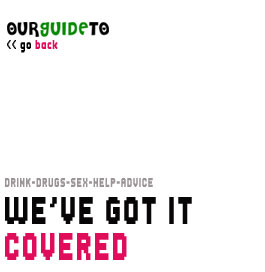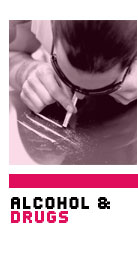 |
 |
 |
 |
 |
 |



ABV is something you will see on any can or bottle containing an alcoholic drink. It actually means “alcohol by volume”. This means that whatever the ABV is, is the amount of alcohol in the drink. So 37.5% of a bottle of vodka is alcohol.
Lots of people talk about units of alcohol but what does this mean. One unit is 8 grams (g) of alcohol or 10 millilitres (ml) of alcohol. So half a pint of 3.6% ABV beer contains about 8g of alcohol, so one unit. 25ml of whiskey at 40% ABV also contains 8g, so one unit again
HOW DO I KNOW HOW MANY UNITS I'VE actually DRANK?
There is a calculation (a sum) that you can do to work out how many units you have had. You multiply (times) the amount you have drunk in millilitres(ml) by the alcohol by volume (abv shown as the %) by 0.001. So ml x abv x 0.001. Some examples are:
So how much can I drink and still be safe and healthy?
It is recommended that:

BAC (Blood Alcohol Concentration) is measured in milligrams (mg) of alcohol in millilitres (ml) of blood. The following is a guide to how the body reacts the higher the BAC:
bac level 50
Feeling of warmth.
Skin flushed.
Impaired judgement.
Decreased inhibitions.
bac level 100
Obvious intoxication in most people.
Increased impairment of judgement, inhibition, attention and control.
Some impairment of muscular performance, slowing of reflexes.
bac level 150
Obvious intoxication in most people.
Staggering gait and other muscular in coordination.
Slurred speech.
Double vision.
Memory and comprehension loss.
bac level 250
Extreme intoxication or stupor.
Reduced response to stimuli.
Inability to stand.
Vomiting.
Incontinence.
Sleepiness.
bac level 350
Coma.
Unconsciousness.
Little response to stimuli.
Incontinence.
Low body temp.
Poor respiration.
Fall in blood pressure.
Clammy skin.
bac level 500
Death Likely
Drinking and Driving
80 mg in 100 ml of blood is the drink drive limit. This can be measured in micrograms in ml of breath (35 micrograms in 100ml of breath)
There is no simple way of knowing how much an individual can drink and stay within the legal limit to drive, or of knowing how the same amount of alcohol will affect different people.
The only safe way of knowing that you having drank to much is by not drinking at all.
And don't forget that alcohol takes a long time to leave your system, so if you drink at night you still might be over the limit the next morning.